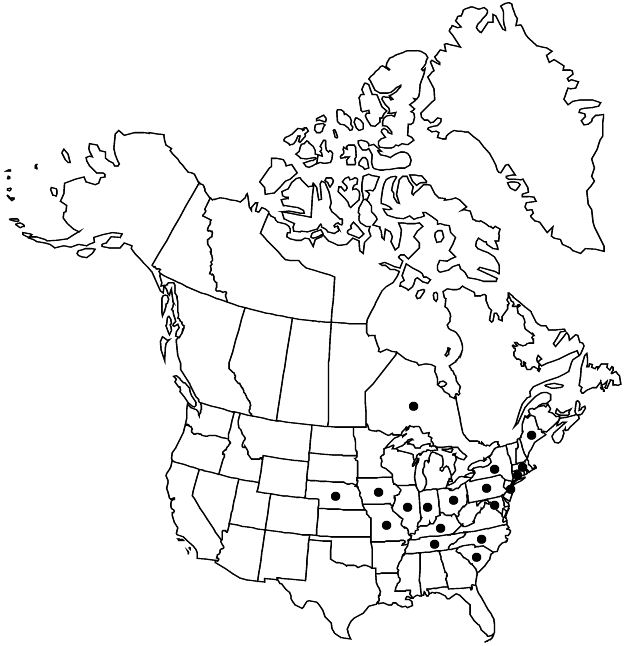Parthenocissus tricuspidata
in A. L. P. P. de Candolle and C. de Candolle, Monogr. Phan. 5: 452. 1887.
Lianas, high climbing. Tendrils 5–10-branched, with adhesive discs. Leaves usually simple, sometimes palmately compound on older plants; petiole usually longer than, sometimes ± equaling, blade; blade lustrous adaxially, ovate to cordate-ovate or cordate-orbiculate, 4.5–17 × 4–16 cm, 3-lobed or leaflets 3, thin, herbaceous, base truncate to slightly cordate, margins crenate to crenate-serrate, apex acute to short-acuminate, surfaces glabrous or abaxial veins puberulent. Inflorescences ± divergently branching, without distinct central axis. Flowers yellowish green. Berries globose, 5–8 mm diam. 2n = 40.
Phenology: Flowering Jun–Jul; fruiting Sep–Oct.
Habitat: Thickets, forest edges, disturbed places.
Elevation: 50–500 m.
Distribution

Introduced; Ont., Conn., D.C., Ill., Ind., Iowa, Ky., Maine, Mass., Mo., Nebr., N.J., N.Y., N.C., Ohio, Pa., S.C., Tenn., e Asia.
Discussion
Parthenocissus tricuspidata has escaped from cultivation and become locally naturalized throughout much of eastern North America.
Selected References
None.